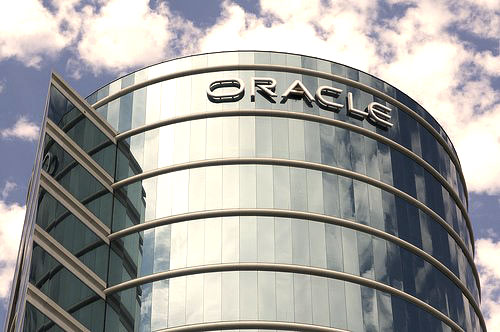During the second quarter, the market continued soaring forward, albeit with a little turbulence along the way. Most of this turbulence came as a result of the Fed hinting at “tapering” their bond-buying program. Monetary stimulus has been akin to shocking a dead frog. There’s no question administering these shocks has caused the economy to move, but, now that the Fed is discussing scaling back monetary policy, the real question is whether or not all this shocking has actually resulted in a renewed heartbeat.
There are some pundits who argue that even reduced monetary stimulus, when combined with what they see as a burgeoning economic recovery, will create a tide that lifts all boats. There are others who believe the strategy of attempting to solve a debt crisis with currency debasement and even more debt is doomed to fail, prompting them to argue that the market is ready to collapse at any moment – these differences are what make a market.
We recognize we are not clairvoyant in predicting market directions, let alone knowing the timing of such predictions. What seems clear to us, based on the spread between our calculations of the implied expected returns of stocks of varying quality levels, is this is not the time to be aggressive. In this environment, our analysis suggests that, in many cases, “narrow bell-curve” (higher quality) stocks have higher expected returns than “wide bell-curve” (lower quality) stocks. As such, our current portfolio is comprised of what we believe to be very high quality businesses.
We want to be clear to communicate, however, that this defensive portfolio will likely not always be the case. We are willing to invest a portion of our portfolio in cyclical high quality businesses, and even into lower quality stocks, but only if we are being compensated to take on the additional risk. For example, if we were in a period such as 2008-09, during which we believed “wide bell-curve” stocks had a much higher expected return than “narrow bell-curve” stocks, then our portfolio construction would shift to reflect this return distribution while always stress-testing the portfolio to ensure that most of the businesses we own can survive or even thrive no matter what the economic future holds. After all, our most important goal is to prevent long-term permanent loss of the capital you entrust to us. In the meantime, while we patiently wait for the spread to widen and mouth-watering bargains to return, we are content to quietly invest in our current selection of what we consider to be very predictable, recession-resistant, and attractively-priced businesses.
Oracle: An Examination of Customer Switching Costs
Even though valuations in the market continue to rise, new investment ideas can surface. On the heels of two disappointing earnings reports, we’ve built a position in Oracle (ORCL), the dominant provider of enterprise database software (74% of revenues and 87% of profits), hardware (14% of revenues and 9% of profits), and services (12% of revenues and 4% of profits). Investors have bid the stock down as a result of weak sales to new software clients, which they worry is a sign of competitive encroachment by cloud-based providers such as Workday and Salesforce.
We think investors overestimate the competitive threat to Oracle’s market-leading position and profitability. To understand why, let’s put ourselves in the place of the main customer of the business, a tool we often find very helpful for analyzing and understanding competitive advantage. In this case, Oracle’s main customer is the enterprise IT purchasing manager. We can divide purchasing managers into two categories. One set works for growing businesses that have no outsourced database software solutions. Their main decision is whether to outsource and to whom. The other set already has an existing database solution and has to decide whether to renew with their current database provider or to switch to a competitor’s product offering. Let’s evaluate each set’s decisions in turn.
For the purchasing manager who has made the decision to outsource, there are many solutions. He can choose between the on-site solutions still offered by many of the traditional competitors in the business such as Oracle and IBM, the newer and cheaper cloud offerings from businesses such as Salesforce and Workday, or a hybrid on-site and cloud solution that traditional competitors such as Oracle and others have recently begun to offer. Despite fears to the contrary, he is still highly likely to choose either the on-site or hybrid solution from the market-leading provider.
The reasons are pretty clear. The purchasing manager likely has a mostly-salaried position and is tasked with one of the most important decisions in the organization. The database solution is the backbone of a company’s operations. It is used to collect, store, and enable access to many different kinds of data across the organization. For example, a retailer’s management uses the software to, among other things, collect information on sales at stores, the resulting change in inventory at those stores, and the inventory levels at surrounding distribution centers, enabling efficient supply-chain management. Thus, if we look at this decision from the perspective of the purchasing manager, he doesn’t benefit very much from going with a smaller, cheaper solution that saves costs for the organization (he keeps his job and, if he’s lucky, maybe gets paid a little bit more over time or in bonus compensation), but he probably gets fired if he goes with the cheaper, less reputable solution and it leads to a security, efficiency, or performance problem. So, unless the pricing differential is extreme, purchasing managers will, most of the time, choose the market leader.
Beautifully, once the purchasing manager signs up for the service, the switching costs go up exponentially. The database software gets more and more entrenched in the business, with large upfront and ongoing investments in compatible hardware, training for employees, and relationships with the database software company’s service team. When the contract eventually comes up for renewal (the decision facing the second set of purchasing managers mentioned earlier), the purchasing manager’s risk-reward is even more asymmetric than it was in the initial decision. If he decides to switch, he incurs tremendous costs to buy new hardware, retrain employees, and form new relationships, while also risking the loss of critical historical data. Additionally, he must face the very real possibility that, after all of this herculean effort and largely duplicative cost, the new system will be no better, not enough better, or possibly even worse than the existing one (and in all of these cases he probably loses his job). Given this fact pattern, he’d be almost crazy to try and switch.
These dynamics lead to the industry structure that we see today, with one dominant competitor and many smaller ones as well as to the adage, “No one ever got fired for hiring IBM.” In the world of database software, Oracle is IBM, with a still growing market share of roughly 50%, which is 2.5x its next largest competitor (coincidentally, IBM) and more market share than the next five competitors combined. These dynamics also lead to tremendous financial characteristics for Oracle, including very high returns on tangible assets, mid 40s operating margins, $33 billion of cash on the balance sheet ($14 billion net of debt), and free cash flow of $14 billion per year. Finally, these dynamics lead to Oracle’s jewel, its existing customer business. This business, which is roughly 45% of revenues and 70% of profits, is rock solid and has remained consistent even over the last couple quarters of weak new business growth, with retention rates above 90 percent and steady mid-single digit revenue growth, much of which is probably from price increases and thus indicative of a continued strong moat.
We believe our Oracle purchase price is justified by the existing customer base’s cash flows alone and that we are getting any new software or hardware business for free. Therefore, if Oracle’s organic new business revenue stabilizes, an outcome we believe is exceedingly likely as a result of both the purchasing manager incentive structure explained above as well as Oracle’s unmatched financial ability to reinvest in the best solutions for customers, we’ll do quite well. In the meantime, we’re happy that Oracle’s management team also sees value in the stock, having more than doubled share repurchases to over five percent of shares outstanding per year.
Concluding Remarks
We are invested right alongside you. While many global challenges surround us, we are very optimistic about the long-term potential of our holdings to compound over time. We will be patient and objective as we diligently seek out the best risk-adjusted expected returns.
Thank you for your continued trust and confidence,
The YCG Team
Disclaimer: The specific securities identified and discussed should not be considered a recommendation to purchase or sell any particular security. Rather, this commentary is presented solely for the purpose of illustrating YCG’s investment approach. These commentaries contain our views and opinions at the time such commentaries were written and are subject to change thereafter. The securities discussed do not represent an account’s entire portfolio and in the aggregate may represent only a small percentage of an account’s portfolio holdings. These commentaries may include “forward looking statements” which may or may not be accurate in the long-term. It should not be assumed that any of the securities transactions or holdings discussed were or will prove to be profitable. Past performance is no guarantee of future results.




